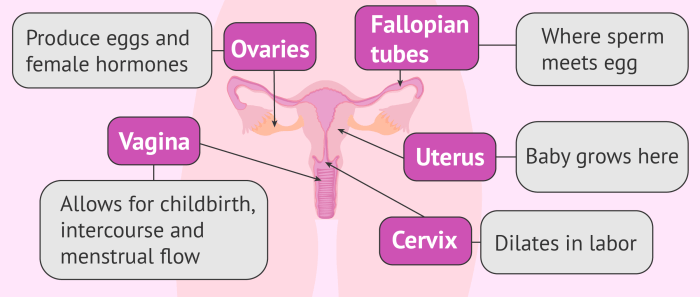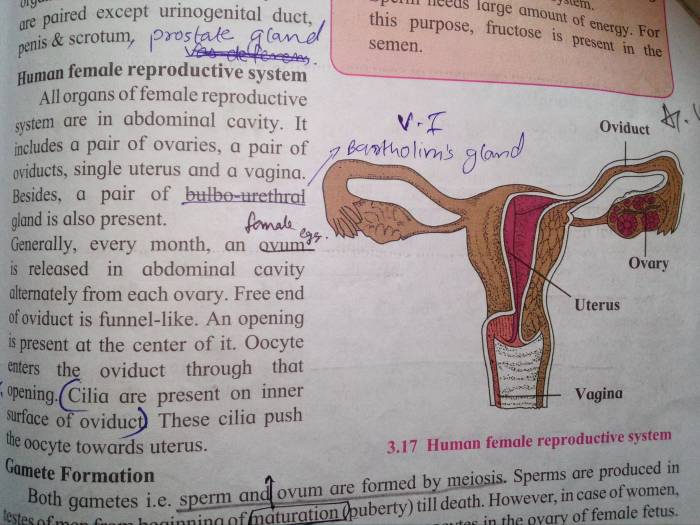The female reproductive system se 9 – The female reproductive system, an intricate and awe-inspiring biological marvel, plays a pivotal role in the continuation of life. This article delves into the depths of this fascinating system, exploring its anatomy, hormonal regulation, and the remarkable journey of reproduction.
From the intricate dance of hormones to the miraculous process of pregnancy, the female reproductive system is a testament to the wonders of nature. This comprehensive overview unveils the secrets of this extraordinary system, providing a deeper understanding of its functions and the profound impact it has on women’s health and well-being.
Fertilization and Pregnancy
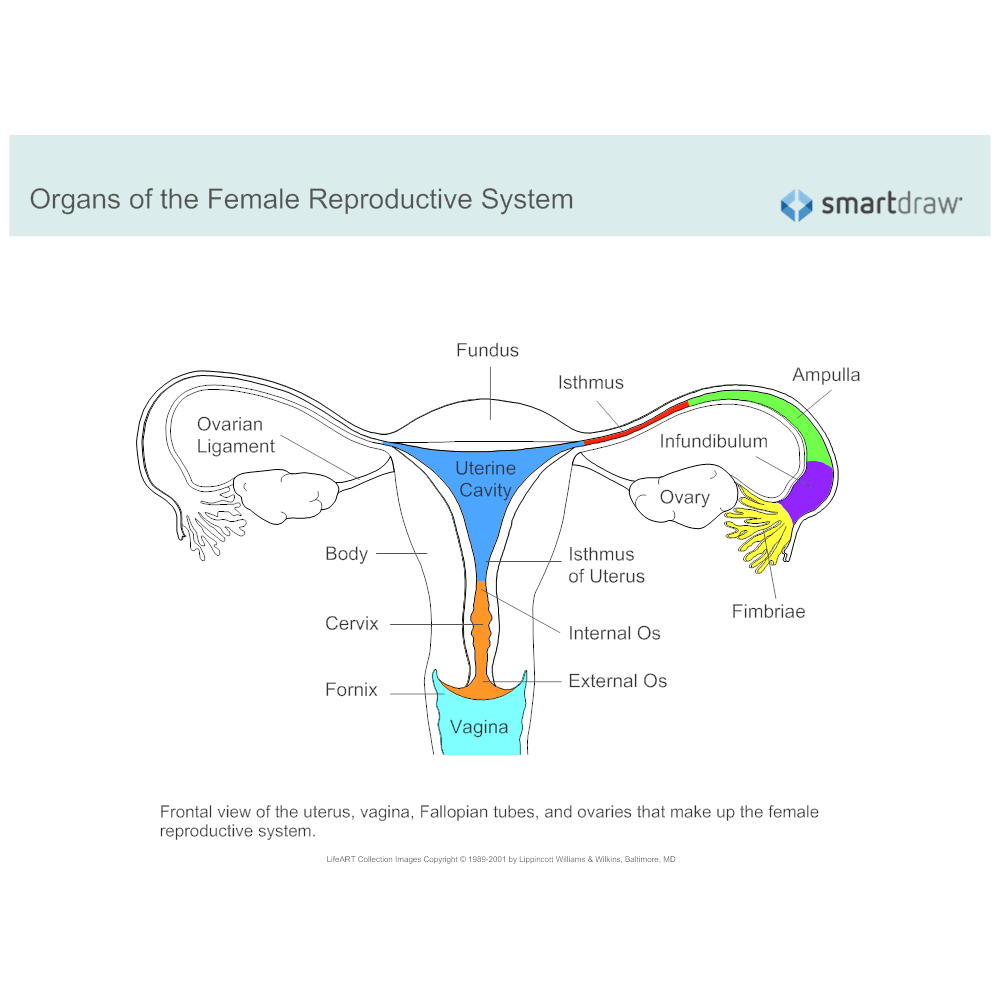
Fertilization and pregnancy are essential processes in the human reproductive system, leading to the development of a new individual. This section delves into the intricacies of fertilization, including the transport of sperm and egg, as well as the subsequent stages of pregnancy, from embryonic development to fetal growth.
Fertilization
Fertilization is the union of a sperm and an egg, resulting in the formation of a zygote. This process occurs in the fallopian tubes, where the sperm, propelled by its tail, travels to meet the egg released during ovulation. Upon encountering the egg, the sperm penetrates its protective layers and fuses with it, forming a single-celled zygote.
Implantation
Following fertilization, the zygote undergoes cell division as it travels down the fallopian tube towards the uterus. Approximately five to six days after fertilization, the zygote reaches the uterus and undergoes implantation, attaching to the uterine lining (endometrium). This process is crucial for the establishment of pregnancy and the nourishment of the developing embryo.
Stages of Pregnancy
Pregnancy is typically divided into three trimesters, each characterized by distinct developmental milestones.
First Trimester
- Week 1-12: Embryonic development, formation of major organs and systems, and differentiation of tissues.
- Week 13-14: The fetus becomes recognizable, with the formation of external features and limb movements.
Second Trimester
- Week 15-27: Rapid fetal growth, development of bones and muscles, and increased fetal movement.
- Week 28-30: The fetus begins to produce its own surfactant, a substance essential for breathing after birth.
Third Trimester
- Week 31-37: The fetus continues to grow and mature, accumulating fat and preparing for life outside the uterus.
- Week 38-40: The fetus is considered full-term and ready for birth.
Common Disorders
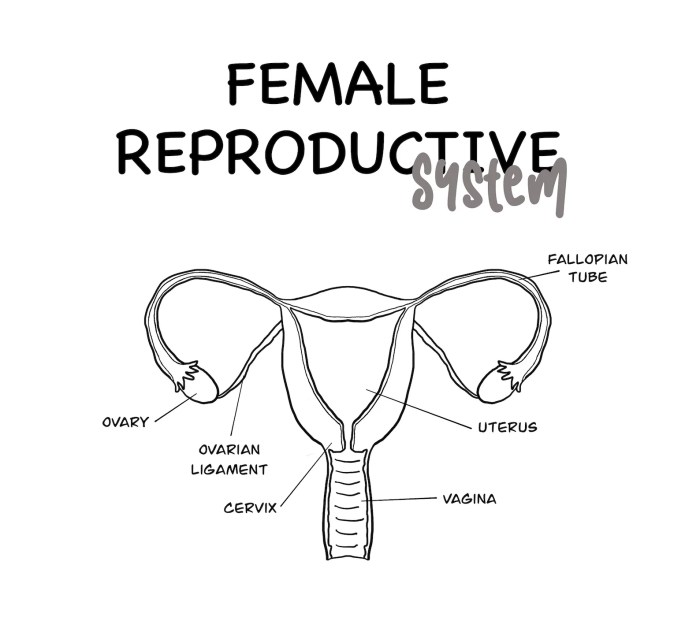
The female reproductive system is prone to various disorders that can affect its function and overall well-being. These disorders range from benign conditions to more serious medical concerns.
Understanding the symptoms, causes, and treatment options for these common disorders is essential for maintaining reproductive health and seeking timely medical attention when necessary.
Endometriosis
Endometriosis is a condition where tissue similar to the lining of the uterus (endometrium) grows outside the uterus, typically on the ovaries, fallopian tubes, or pelvic lining.
- Symptoms:Painful periods, heavy bleeding, infertility, pain during intercourse, and bowel movements.
- Causes:The exact cause is unknown, but theories include retrograde menstruation (backflow of menstrual blood through the fallopian tubes), hormonal imbalances, and genetic factors.
- Treatment:Medications to suppress hormone production, surgery to remove endometrial implants, or a combination of both.
Polycystic Ovary Syndrome (PCOS)
PCOS is a hormonal disorder that affects the ovaries and ovulation. It is characterized by the presence of multiple small cysts on the ovaries, irregular menstrual cycles, and elevated levels of androgens (male hormones).
- Symptoms:Irregular periods, weight gain, acne, excessive hair growth, and infertility.
- Causes:The exact cause is unknown, but it is thought to involve genetic, hormonal, and environmental factors.
- Treatment:Lifestyle modifications (weight loss, exercise), medications to regulate hormones and ovulation, and fertility treatments.
Uterine Fibroids
Uterine fibroids are non-cancerous growths that develop in the muscular wall of the uterus. They are common in women of reproductive age.
- Symptoms:Heavy bleeding during periods, pelvic pain, frequent urination, and infertility.
- Causes:The exact cause is unknown, but they are thought to be influenced by hormones, genetics, and environmental factors.
- Treatment:Medications to shrink fibroids, minimally invasive procedures (e.g., uterine artery embolization), or surgery to remove fibroids.
Reproductive Health
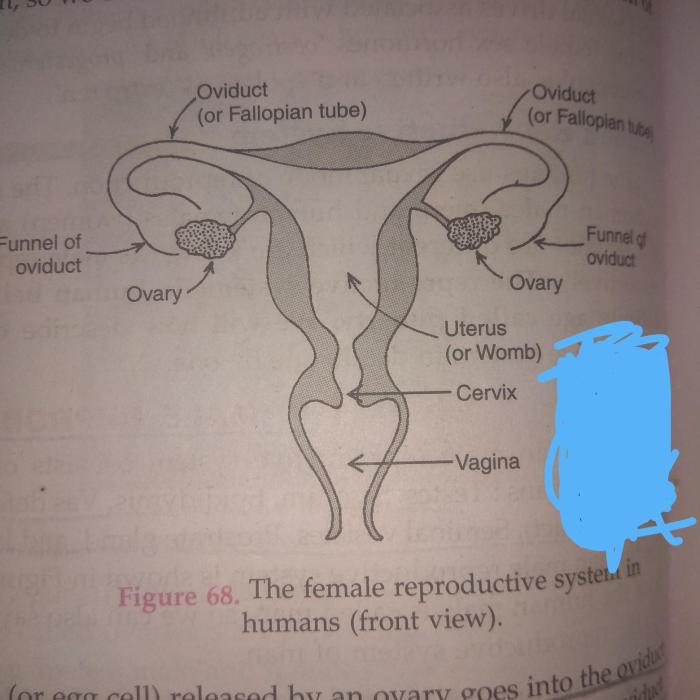
Reproductive health is a state of complete physical, mental, and social well-being in all matters relating to the reproductive system, its functions, and processes. Regular gynecological exams and screenings are essential for maintaining reproductive health. These exams can detect and prevent various conditions, including sexually transmitted infections, cervical cancer, and breast cancer.
Contraception and Family Planning, The female reproductive system se 9
Contraception and family planning are crucial aspects of reproductive health. Contraception methods help prevent unintended pregnancies, allowing individuals to plan and space their children. Family planning involves making informed decisions about the timing and spacing of pregnancies, as well as the number of children desired.
By empowering individuals with knowledge and access to contraception and family planning services, reproductive health can be improved, and the overall well-being of women and families can be enhanced.
Quick FAQs: The Female Reproductive System Se 9
What are the common disorders of the female reproductive system?
Common disorders include endometriosis, polycystic ovary syndrome (PCOS), and uterine fibroids, which can affect fertility, cause pain, and disrupt menstrual cycles.
What is the importance of regular gynecological exams?
Regular exams allow healthcare providers to detect and prevent potential health issues, provide contraception counseling, and offer support for reproductive health concerns.
How does contraception contribute to reproductive health?
Contraception empowers individuals to control their fertility, plan their families, and prevent unintended pregnancies, contributing to overall reproductive health and well-being.
